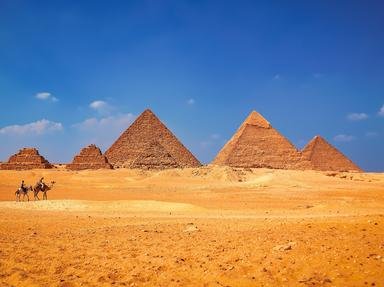Quiz Answer Key and Fun Facts
1. Layla excitedly prepares for the religious festival her home-town of Helwan is having next month. She will be decking herself with all the finest materials such a luxurious lifestyle as hers can buy. Her hair will be decorated with purple and white _____ flowers. To the Egyptians, this colorful water-lily was a symbol of rebirth, creation, and the sun.
2. Her servants bring her many fragrant perfumes. Some were delivered from as far as Punt. She tries many, but finds most to be unpleasant. Layla's favorite one seems to be _________. It's made from the bark of a specific tree, and the ancient Egyptians had a cavalcade of uses for it. In modern times, people might dust it on top of their cocoa.
3. Layla just must have the most fashionable clothing, and so she sends for dresses of red, blue and yellow. Seamstresses gather their materials from peasant farmers, who work fields of ______ to attain the fibers to weave into cloth. Known as "the gift of the Nile," this plant is also used to make a common homeopathic oil.
4. In order to dye fabric different colors, a dyer used materials from plants and alums. To produce the color yellow, Egyptians used the bark of a _________ tree. This tree bears a red, apple shaped fruit, and its juice can be found in many health food stores today.
5. Like many other young ladies, Layla is going to be painted at the festival. Intricate patterns of a wash-away pigment made from ________ will be applied to her skin. ________ was also used to coat pottery and dye a woman's hair when it began graying.
6. As the festival approaches, Layla spends the final days making her way down to Helwan. It's there that she will stay with her family for the remainder of the festivities. She will be traveling in a small traveling boat made from ________. This grass-like plant was, and still is, used to make boats and also as a roofing material.
7. As the ship passes down the Nile, Layla observes workers digging clay up from the ground. This clay will later become large pots to hold________, an intoxicating beverage made from barley. There will be many hundreds of gallons at the festival.
8. At last the ship docks on the river bank. Layla is ecstatic to see her family after such a long time. She fondly remembers the cooks baking hot, spongy cakes drizzled with _______. This sweet concoction was also smeared on cuts and scrapes to kill bacteria.
9. Instruments clang together, creating incoherent melodies along the plaza. The festival is in full swing. Bow shaped harps, with strings made from ________ _____, pluck a cheerful tune. Layla dances through the night.
10. As the festival winds down Layla makes a small offering of _______ to the gods at the local temple. This beverage, considered a delicacy to the Egyptians, was often placed along with oils, incense and animals, in order to appease the deities. It goes great with cookies too.
Source: Author
hunterkyrie
This quiz was reviewed by FunTrivia editor
bloomsby before going online.
Any errors found in FunTrivia content are routinely corrected through our feedback system.

